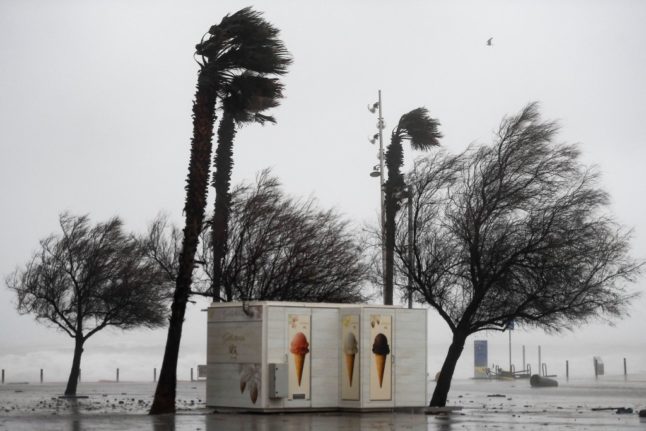Gusts of up to 120 kilometres per hour (75 miles per hour), downpours and hail hit the Balearic islands as well as Catalonia and Valencia on mainland Spain, which were all under a high-risk warning by the national meteorological agency Aemet.
Que se nos ha puesto un poco mal el tiempo en Mallorca. #CalaMajor pic.twitter.com/feVWgFajGY
— 𝗗𝗔𝗡𝗜 𝗧𝗢𝗥𝗥𝗘𝗦 🔴⚪🔴⚪🔴⚪🔴 (@jumpcarey) August 27, 2023
Local authorities reported several people were injured, according to the Spanish press.
Un reventón, de lo mejor que he visto, fijaros al final del vídeo, se cae la nube, increíble. 👏 #Mallorca #Baleares #tormentas #tormenta pic.twitter.com/tw0LH2CkwA
— FernandoMadrid. (@FernandoMadridd) August 27, 2023
Thousands of people in the Balearics have been left without electricity.
Fallen trees and flooded streets were also reported across the region.
La que ha caigut aquest matí al Maresme ha deixat alguns passos de vianants com aquest a Premià de Mar que es veu en el vídeo que em passa un amic @meteocat @meteomarccm pic.twitter.com/GvWkb5myDd
— JoseManuelLopez🧡 (@josemapezgon) August 27, 2023
The wind broke the moorings of a 330-metre (1,080 feet) cruise ship stationed in Palma, on the island of Mallorca, and drove it into a moored oil tanker, injuring six people, the Balearic islands port authority said.
#Mallorca #España momento en el que el #crusero se mueve por los fuertes vientos pic.twitter.com/y81dee6Vwr
— People on camera (@Peopleoncameras) August 27, 2023
Spanish airport operator Aena said 24 flights were cancelled and 29 were diverted to and from the islands. Up to 100 flights to and from the Balearics were reported affected on Monday.
A most destructive thunderstorm has hit today the #Spanish Island of #Mallorca.#SevereWeather #Mallorca #Spain #strongwind #thunderstorm #weatheralert #weatheradvisory #latestupdate #Breaking #tormenta #Damage #incidents pic.twitter.com/LKfOhHY4Dk
— mishikasingh (@mishika_singh) August 27, 2023
Aemet has extended the weather warning until Monday for a small portion of the archipelago and Catalonia.
The storm hit Portals very hard, in #Calvià
A sailboat has broken and hit the rocks.#Mallorca #unwetter #Balearic #tormenta #Weather #TropicalStorm #Palma
pic.twitter.com/xBNtPKzhDf— Chaudhary Parvez (@ChaudharyParvez) August 27, 2023
The risk is expected to decrease by Tuesday.
The storm came with a drop in temperatures, which follows Spain’s fourth heatwave this summer that had ended Thursday.



 Please whitelist us to continue reading.
Please whitelist us to continue reading.
Member comments